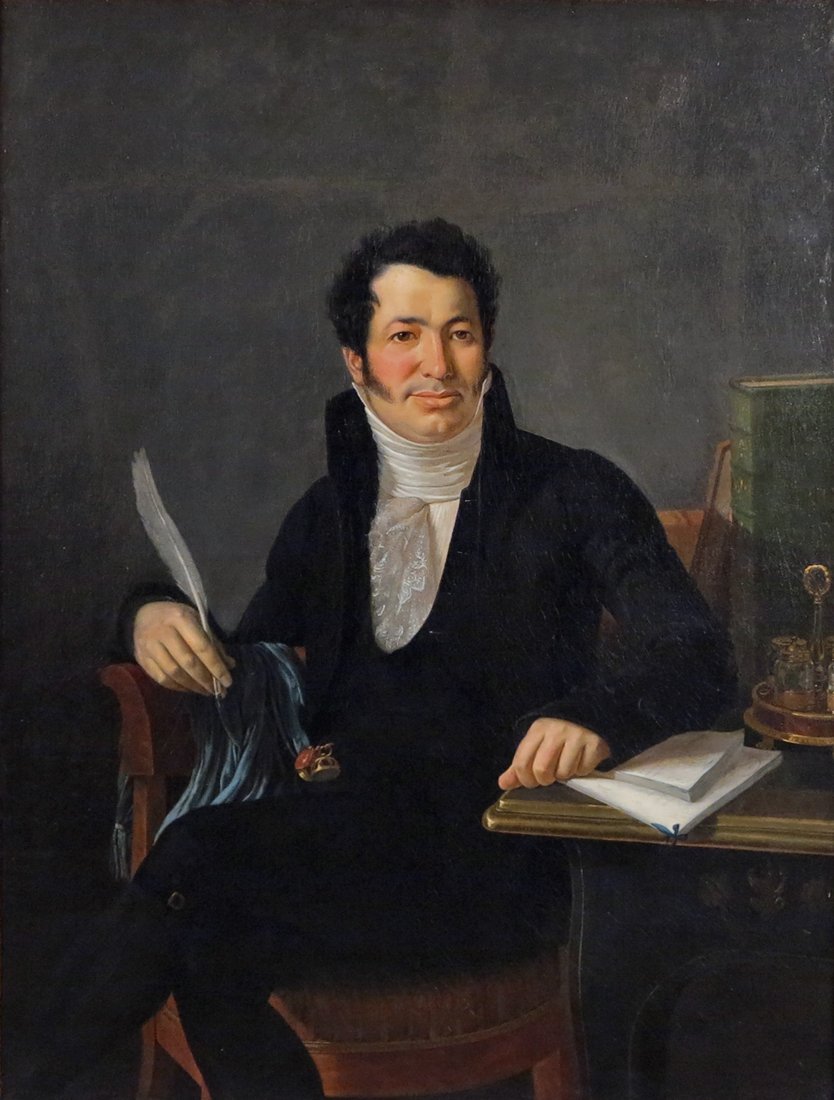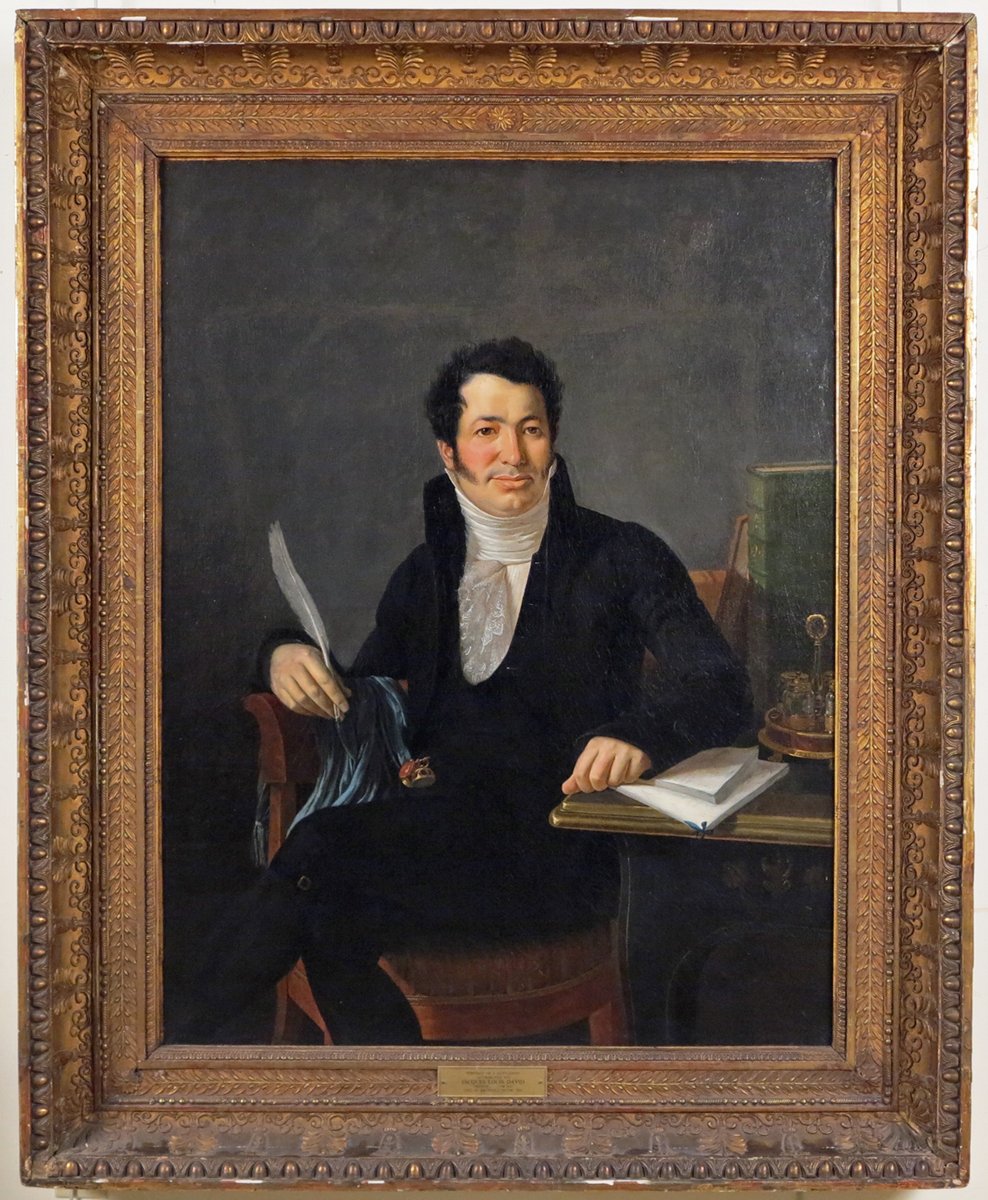Paintings
Francois-Xavier Fabre
French 1766-1837Portrait of Chevalier de Vernègues
Oil on canvas46 by 35 in. W/frame 58 by 47 in.
LITERATURE:
Toledo Museum News, No. 66, September 1933, reproduced;
B.-M. Godwin, Toledo Museum of Art, Catalogue of European Paintings, Toledo 1939, p. 168, reproduced p. 169;
L. Hautecoeur, Louis David, Paris 1954, p. 168;
D.L. Dowd, “Art and the Theater During the French Revolution: The Role of Louis David,” in Art Quarterly, vol. 23, Spring 1960;The Toledo Museum of Art, The European Paintings, Toledo 1976, p. 389 (as Follower of Jacques-Louis David).
NOTE:
Based on images, Dr. Laure Pellicer has identified this portrait to be a work by François-Xavier Fabre. She believes the portrait to depict the Chevalier de Vernègues who was appointed by Louis 18th as the Resident Minister in Tuscany in 1818.
Provenance:
Seminaire de St. Sulpice, Paris;
Jules Guérin, Paris;
Dr. Mersch, Paris;
With Ehrich Galleries, New York;
With Robert C. Vose, Boston;
Arthur J. Secor, acquired in 1924;
By whom given to the The Toledo Museum of Art, Toledo, Ohio (acc. no. 24.33);
Sotheby’s New York, January, 2016
Le Trianon Fine Art & Antiques, Sheffield Ma.
See Artist Bio below.
Francois-Xavier Fabre
French 1766-1837Born in Montpellier, Fabre was a pupil of Jacques-Louis David, and made his name by winning the Prix de Rome in 1787. During the French Revolution, he went to live in Florence, becoming a member of the Florentine Academy and a teacher of art.
The friends he made in Italy included the dramatist, Vittorio Alfieri, Princess Louise of Stolberg-Gedern, Countess of Albany,
After Princess Louise’s death in 1824, he inherited her fortune, which he used to found an art school in his home town. On his own death, he bequeathed his own art collection to the town, forming the basis of the Musée Fabre.
Fabre began his training in the Montpellier’s art academy, where he spent several years prior to joining Jacques-Louis David’s studio in Paris. His studies were paid for by the financier and art collector, Philippe-Laurent de Joubert. Philippe-Laurent was the father of Laurent-Nicolas de Joubert. Fabre painted a portrait of Laurent-Nicolas de Joubert, which is now in the Getty Museum. Fabre gained popularity in Florence. The city’s Italian aristocrats and tourists were drawn to his elegance, realism, and precision of his portraits. This popularity earned Fabre a place in the Florentine Academy. He became an art teacher, art collector, and art dealer in Florence.[1]
Fabre’s works include The Dying Saint Sebastian (1789), The Judgment of Paris (1808), and The Death of Narcissus (1814).



